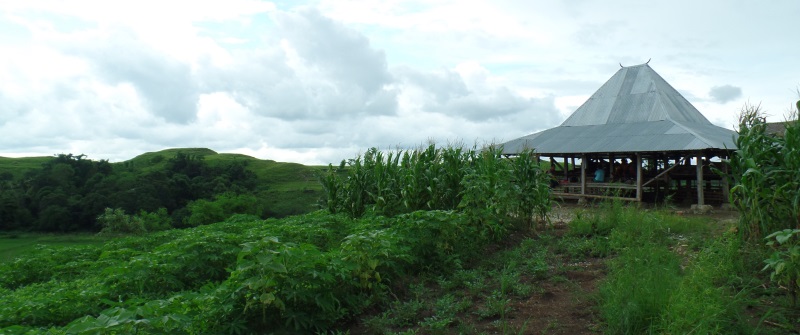
07 Oct Blog: How much is that in horses?
By Jacqueline Vel
While the concept of a ‘sharing economy’ is gaining popularity in modern societies, in Eastern Indonesia it is a traditional way of coping with daily life. Based on her fieldwork in Sumba, Jacqueline Vel outlines some of the difficulties that researchers and policy-makers face in dealing with this phenomenon.
The sharing economy is a relatively new concept. It is a model for alternative exchange between modern consumers who help each other, often without using cash. The Internet connects consumers who by-pass companies and regulators. Airbnb and peerby are famous examples of sharing economies that municipalities and national governments find hard to govern (and tax).
In Eastern Indonesia it is not social media and Internet reviews, but kinship relations and a track record of past exchanges that provide access to participation in the sharing economy. More than 80 per cent of the people on the island Sumba are farmers who produce their own food and sell or barter the surplus. They have no regular cash income, and generally no insurance. Any type of investment or large expenditure – a new house, a child’s university fees, a wedding or a failed harvest – needs savings. These are mostly in the form of livestock and traditional cloth. Sometimes there is a government project or support from an NGO, but in most cases relatives and neighbours will help each other. There is nothing romantic about this mutual help; it is a system with strict rules about exchange and reciprocal obligations.
Twenty years ago my book, The Uma-economy, analysed Sumba’s sharing economy on the basis of fieldwork conducted in the 1980s. More recent theories about the introduction of the monetary economy and the forces of invading capitalism predict the end of these traditional sharing systems. Nevertheless during our last fieldwork trip to Sumba earlier this year, it became clear that that time is still distant.
Our team used general questionnaires. After all, we were participating in an Indonesia-wide programme concerning household vulnerability and food insecurity. We soon found out how deficient our survey questions were in the light of local realities. Take for example, the question “How much did you earn with your rice harvest last year?” Such a simple question, yet impossible to answer in easily measurable terms. People would primarily eat their own rice, give a few small bags to relatives and also donate rice as a contribution for a ceremony. In addition, rice prices vary per place and season. We soon discovered that a more culturally informed question would be “How many bags of rice did you harvest?”
One household surveyed was asked about the cost of their newly built house. The answer revealed Sumba’s traditional sharing economy in full colour. The host explained that he received construction wood from a small forest 10 km away that he could access because of kinship relations with the land owners. This amount of wood would be remembered as a debt in a long-term exchange relationship. The carpenter received two horses for his services. Neighbours provided labour when more hands were needed and were treated to a good meal with meat, coffee and tobacco. They trusted that the service would be returned whenever they would need it.
So there we were with our quantitative questionnaire, unable to measure adequately the value of horses, houses, rice or labour. The sharing economy challenges us to rethink our measuring tools, and perhaps also to redefine poverty?
(Jacqueline Vel is also co-researcher in the international programme ‘Household vulnerability, food security and the politics of social protection in Indonesia’, funded by the Australian Research Council as discovery project.)




No Comments